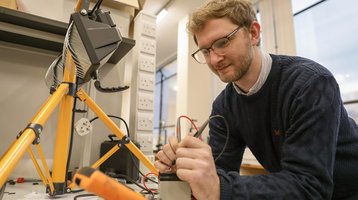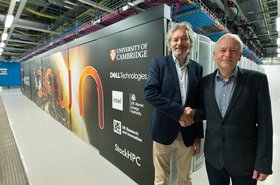Scientists from the University of Southampton say they have developed a low-cost grid-scale battery with a water-based electrolyte which could help incorporate more renewable power into the energy grid.
The Soluble Lead Flow Battery (SLFB) is “ideal for large-scale energy storage for stationary applications,” according to the researchers, meaning it could be used to store wind and solar energy to be released onto the grid at times when supply is running low.
How the SLFB works
It stores energy in lead, which is dissolved in a non-flammable, water-based electrolyte. The system is apparently completely circular and made from materials that can be sourced from spent lead-acid batteries. At the end of its life, it can be recycled using existing, scaled processes.
SLFB was created by Dr. Ewan Fraser, a researcher at the university and founder of SoLead Energy, and Professor Richard Wills of the university’s energy technology group.
Dr. Fraser said: “The fundamental aim of energy storage is to provide a reliable electricity network while transitioning to a net zero energy system, i.e. to minimize the damage we are doing to the environment. Many existing technologies need materials with damaging mining activities that are then shipped around the world to manufacturing sites.
“SoLead Energy was founded to create an energy storage solution that can make use of processes, supply chains, and recycling solutions that already exist near to where the technology is required. In this way, new manufacturing capacity can be added quickly in a way that is kinder to the environment.”
The challenges of water-based electrolytes
Dr. Fraser met Professor Wills when he enrolled for his PhD at the University of Southampton, and they went on to work together to develop SLFB, first as supervisor and student, then as colleagues. This led them to found SoLead Energy with the support of Future Worlds, the startup accelerator at the University of Southampton.
“With a greater penetration of renewable energy in electricity networks, it is becoming more difficult to balance generation with demand for electricity, increasing the strain on the grid,” Dr. Fraser said. “Increasing renewables can also lead to decreased grid stability, making power cuts more likely. With the dropping price of solar, clean energy is becoming available to those who do not have access to electricity.”
Storing sufficient renewable power so that a consistent grid supply is maintained is a big challenge for operators as they approach the energy transition. Water-based electrolytes are not new, but their use in large-scale storage has previously been hindered by concerns over the battery density levels that can be achieved, as well as the limited life-span of the cells.
But Dr. Fraser says the SLFB can provide a realistic alternative to lithium-ion, the most commonly used type of battery. “Lithium-ion has a high upfront cost, is prone to thermal runaway and fire, or needs expensive mitigation strategies, and isn’t economical beyond four hours of storage,” he said.
“Our solution is a non-flammable, cost-effective system, that has a completely circular manufacturing and recycling process that ties in with existing infrastructure and is therefore kinder to the environment.”



